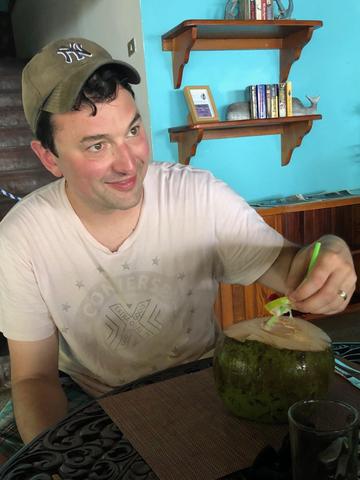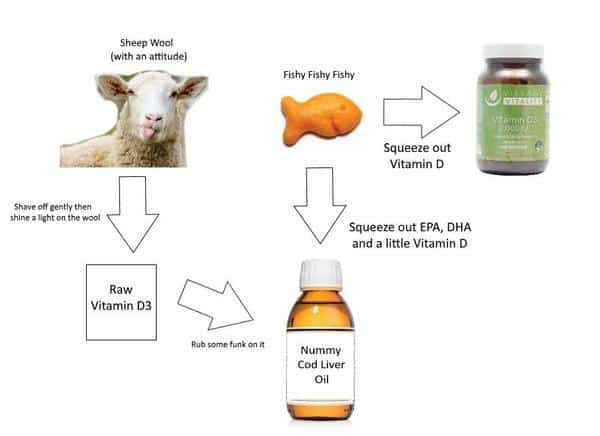How Do I Get More Vitamin D
Young woman at the window enjoying the sunshine. sun-window-vitamin-d
Credit: Getty Images
If you don't spend enough time in the sun or if your body has trouble absorbing vitamin D, you may not get enough. Here are 12 ways to ensure adequate intake.
Why is vitamin D so important?
Calcium gets most of the credit for maintaining strong, healthy bones, but vitamin D is also a key player in bone health."You can have all the calcium in the world, [but] it doesn't get absorbed into your bones" without vitamin D, Donald Ford, MD, a family medicine physician at Cleveland Clinic, tells Health. That's vitamin D's job—without it, the calcium you get from yogurt, cheese, and even vegetables like broccoli wouldn't get absorbed, and ultimately wouldn't do much in terms of keeping your bones strong. Vitamin D can also help prevent against osteoporosis, which makes your bones brittle, and a vitamin D deficiency can contribute to a "gradual loss of strength of bones over time," Dr. Ford says.As far as a daily dosage of vitamin D goes, "the Institute of Medicine recommends 600-1000 IU of Vitamin D daily to meet 95% of the populations' needs," says Tania Elliott, MD, an instructor of clinical medicine at NYU Langone. (FYI: IU stands for international units, which is what vitamin D is measured in, rather than grams or milligrams.) Luckily, there are plenty of (easy) ways to get the recommended amount each day—here's how.
Advertisement
Advertisement
Sunlight
sun heat summer spf protection skin woman health
Credit: Getty Images
Sunlight spurs the body to make vitamin D, but it's important to keep in mind that exposure to the sun comes with a risk of developing skin cancer. Luckily, just a small amount of sunlight during the day can help with vitamin D levels.
"If you're going to get it from the sun, about 20 to 25 minutes of exposure is helpful," says Stephen Honig, MD, director of the Osteoporosis Center at the Hospital for Joint Diseases, in New York City. (As always, though, make sure you're protecting your skin from harmful rays when you're getting your daily vitamin D intake.)
The sun is less likely to provide your daily needs at higher latitudes, in the winter, or if you're older or dark skinned (skin pigment blocks light and the process is less efficient with age). And FYI: Light through a window won't work (though you should still wear sunscreen inside due to exposure to UVA rays).
RELATED: 5 Things You Need to Know About Vitamin D Deficiency
Fatty fish
fish-recipes-health-mag-may-2020
Credit: Greg DuPree
Different types of fish are excellent sources of vitamin D, says Dr. Ford. You should look to fattier fishes, specifically, if you're trying to work more vitamin D into your diet, he adds. "Vitamin D is present in the ones we think of as oily [or] fatty," he explains.
Three ounces of cooked rainbow trout have 645 IUs of vitamin D, according to the National Institutes of Health. Additionally, the same amount of cooked salmon has 570 IUs. Sardines, tuna fish, and cod liver oil also have vitamin D.
Also important: When you add more fish into your diet, you're also getting an extra dose of heart-healthy omega-3 fatty acids.
RELATED: Mediterranean Salmon With Tomatoes, Olives, and Zucchini
Advertisement
Canned tuna fish
tuna-can
Credit: Getty Images
Fresh fish aren't the only way to boost your vitamin D intake; you can get vitamin D from a can, too.
Canned tuna fish and canned sardines both contain vitamin D, and are usually less expensive than fresh fish. Plus, a longer shelf life makes the canned products easy to stock up on and use at your leisure. Canned light tuna has the most vitamin D—about 150 IUs per 4 ounces—while canned albacore tuna has about 50 IUs per 4 ounces, and canned sardines have a little more than 40 IUs per two sardines.
RELATED: 11 Tips to Make Over Your Sad Desk Lunch
Certain mushrooms
Fresh mixed forest mushrooms on the blue background, top view.
Credit: Adobe Stock
"Believe it or not, mushrooms can be treated with UV light which fortifies them with Vitamin D," says Dr. Elliott—that's because, like humans, mushrooms also have the capacity to produce vitamin D. (Mushrooms, however, are usually grown in dark environments, which is why they must be treated with UV light for exposure.)
Still, certain mushrooms can still be a beneficial source of vitamin D. Check to see if vitamin D–rich 'shrooms, like Dole's portobello mushrooms, are available at a store near you. They're perfect for vegetarians looking for plant-based foods that contain the vitamin. Dole's portobellos will give you 400 IUs of vitamin D per 3-ounce serving (about 1 cup of diced mushrooms).
RELATED: Vitamin D: Why You Need This Vitamin Now
Fortified milk
low-fat-milk-superfood
Credit: Getty Images
Almost all types of cow's milk in the U.S. are fortified with vitamin D, but ice cream and cheese are not.
In general, an 8-ounce glass of milk contains at least 100 IUs of vitamin D, and a 6-ounce serving of yogurt contains 80 IUs, but the amount can be higher (or lower) depending on how much is added.
Some soy and rice milks are fortified with about the same amount, but check the label since not all contain vitamin D.
RELATED: Why a Vitamin D Deficiency May Explain Your Chronic Headaches
Advertisement
Advertisement
Some types of orange juice
oranges
Credit: didecs/Getty Images
Not a dairy fan? No problem. You can get vitamin D from fortified orange juice.
One 8-ounce glass of fortified juice usually has around 100 IUs of vitamin D, but the amount varies from brand to brand. Not all brands are fortified, so check the label.
Two fortified brands, Florida Natural Orange Juice and Minute Maid Kids+ Orange Juice, contain 100 IUs per 8-ounce serving.
RELATED: 6 'Ultra-Processed' Foods to Throw Out Right Now
Supplements
fish-oil-supplements-benefits fish-oil supplements benefits
Credit: Yulia Reznikov/Getty Images
Some people also turn to supplements to increase their vitamin D intake, but whether that's necessary for most people "is a big area of controversy in medicine," says Dr. Ford.
Many people get their blood tested for having a vitamin D deficiency, but that's not always a necessity. "Unless there are specific reasons for concern, there's not general recommendation for testing and screening," says Dr. Ford. And even if you do get tested, the results might not be accurate. "Vitamin D testing is not necessary for most people, and that's because there really isn't a reliable test or acceptable reference range—that's why it seems like everyone these days has a low vitamin D level," says Dr. Elliott.
In short, if you're worried about your vitamin D levels, you might want to consider spending the recommended amount of time in the sun and adding more fatty fish to your diet before adding another supplement to your daily medicine routine. But, as always, if you're concerned about your bone health, check in with your primary care provider to make sure you're doing everything possible to stay healthy, and to see if vitamin D supplements could help.
RELATED: High Vitamin D Levels Are Linked to Better Exercise Capacity
Egg yolks
eggs
Credit: Getty Images
Eggs are a convenient way to get vitamin D. They're popular in many breakfast, lunch, dinner, and dessert recipes.
Since the vitamin D in an egg comes from its yolk, it's important to use the whole egg—not just the whites. One yolk will give you about 40 IUs, but don't try to get your daily vitamin D just from eggs.
One egg contains about 200 milligrams of cholesterol, and the American Heart Association recommends consuming no more than 300 milligrams a day for heart health.
RELATED: Is It Really Okay to Eat Eggs Every Day?
Advertisement
Fortified cereal
boost-metabolism-cereal-breakfast
Credit: Getty Images
If you're a vitamin D seeker looking for a crunch, look no further than fortified cereals. Choose a low-calorie fortified cereal like Multi Grain Cheerios to get part of your daily fill of vitamin D. You can pair it with fortified milk and a glass of fortified OJ too.
A 1-cup (29 gram) serving of Multi Grain Cheerios with one-half cup of fortified milk is 90 IUs; add in an 8-ounce glass of fortified orange juice, and your total is close to 200 IUs.
Beef liver
Raw beef liver ovxer gray background viewed from above
Credit: Getty Images
Although it might not be the most appealing source, a 3.5-ounce serving of cooked beef liver contains about 50 IUs of vitamin D—and several other nutrients. You'll also be getting vitamin A, iron, and protein.
However, beef liver is also high in cholesterol, so you might want to choose an oily fish instead.
RELATED: When You Eat Really Does Make a Difference—Here's Why
Cod liver oil
vitamin-d-bronchitis
Credit: MirageC/Getty Images
While its name might suggest a less-than-savory flavor, cod liver oil is often flavored with mint or citrus, or comes in capsule form.
One tablespoon contains about 1,300 IUs of vitamin D, which is more than twice the recommended dietary allowance of 600 IUs per day.
That amount doesn't exceed the maximum upper-level intake of 4,000 IUs for people over 8 years old, but it exceeds the daily maximum for infants (1,000 IUs).
To get our top stories delivered to your inbox, sign up for the Healthy Living newsletter
Advertisement
Ultraviolet lamps and bulbs
verilux-happy-light
Credit: Amazon.com
People at high risk of vitamin D deficiency may resort to UV-emitting lamps and bulbs. This includes people unable to absorb the vitamin (malabsorption) or those who can't get enough in winter months, says Michael F. Holick, MD, a professor of medicine, sociology, and biophysics at Boston University Medical Center.
These are similar to tanning beds, but smaller. "The lamp is only about 24 inches by about 16 inches," says Dr. Holick.
These lamps carry the same skin-cancer risks and need for protective eyewear, so they're best for those with a doctor's recommendation.
RELATED: These Are the 7 Top-Rated Light Therapy Boxes for Seasonal Depression on Amazon
Up Next
Source: https://www.health.com/condition/osteoporosis/12-ways-to-get-your-daily-vitamin-d







 Pseudoxanthoma elasticum: A condition where the mineralization of skin and premature wrinkles occur.
Pseudoxanthoma elasticum: A condition where the mineralization of skin and premature wrinkles occur.





